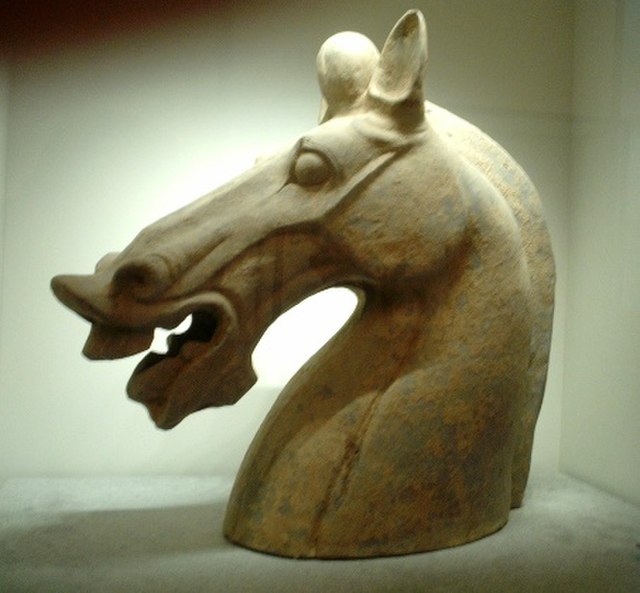Sino-Roman relations comprised the contacts and flows of trade goods, information, and occasional travelers between the Roman Empire and the Han dynasty, as well as between the later Eastern Roman Empire and various successive Chinese dynasties that followed. These empires inched progressively closer to each other in the course of the Roman expansion into ancient Western Asia and of the simultaneous Han military incursions into Central Asia. Mutual awareness remained low, and firm knowledge about each other was limited. Surviving records document only a few attempts at direct contact. Intermediate empires such as the Parthians and Kushans, seeking to maintain control over the lucrative silk trade, inhibited direct contact between the two ancient Eurasian powers. In 97 AD, the Chinese general Ban Chao tried to send his envoy Gan Ying to Rome, but Parthians dissuaded Gan from venturing beyond the Persian Gulf. Ancient Chinese historians recorded several alleged Roman emissaries to China. The first one on record, supposedly either from the Roman emperor Antoninus Pius or from his adopted son Marcus Aurelius, arrived in 166 AD. Others are recorded as arriving in 226 and 284 AD, followed by a long hiatus until the first recorded Byzantine embassy in 643 AD.

The Sampul tapestry, a woollen wall hanging from Lop County, Hotan Prefecture, Xinjiang, China, showing a possibly Greek soldier from the Greco-Bactrian kingdom (250–125 BC), with blue eyes, wielding a spear, and wearing what appears to be a diadem headband; depicted above him is a centaur, from Greek mythology, a common motif in Hellenistic art; Xinjiang Region Museum.
The Chinese impression of the Daqin people, from the Ming-dynasty encyclopedia Sancai Tuhui, 1609
Western Han ceramic vessels showing acrobats balancing by hand on their rims; the Shiji and Book of Han state that Mithridates II of the Parthian Empire sent gifts including Syrian jugglers to the court of Emperor Wu of Han; the Book of the Later Han states that a king of Burma sent acrobats originally from Daqin to the court of Emperor An of Han in 120 AD.
A mural showing women dressed in traditional Hanfu silk robes, from the Dahuting Tomb (Chinese: 打虎亭汉墓, pinyin: Dahuting Han mu) of the late Eastern Han dynasty (25–220 AD), located in Zhengzhou, Henan province, China
The Silk Road was a network of Eurasian trade routes active from the second century BCE until the mid-15th century. Spanning over 6,400 kilometers, it played a central role in facilitating economic, cultural, political, and religious interactions between the East and West. The name "Silk Road," first coined in the late 19th century, has fallen into disuse among some modern historians in favor of Silk Routes, on the grounds that it more accurately describes the intricate web of land and sea routes connecting Central, East, South, Southeast, and West Asia as well as East Africa and Southern Europe.
Woven silk textile from Tomb No. 1 at Mawangdui, Changsha, Hunan province, China, dated to the Western Han Era, 2nd century BCE
Chinese jade and steatite plaques, in the Scythian-style animal art of the steppes. 4th–3rd century BCE. British Museum.
Soldier with a centaur in the Sampul tapestry, wool wall hanging, 3rd–2nd century BCE, Xinjiang Museum, Urumqi, Xinjiang, China.
A ceramic horse head and neck (broken from the body), from the Chinese Eastern Han dynasty (1st–2nd century CE)







